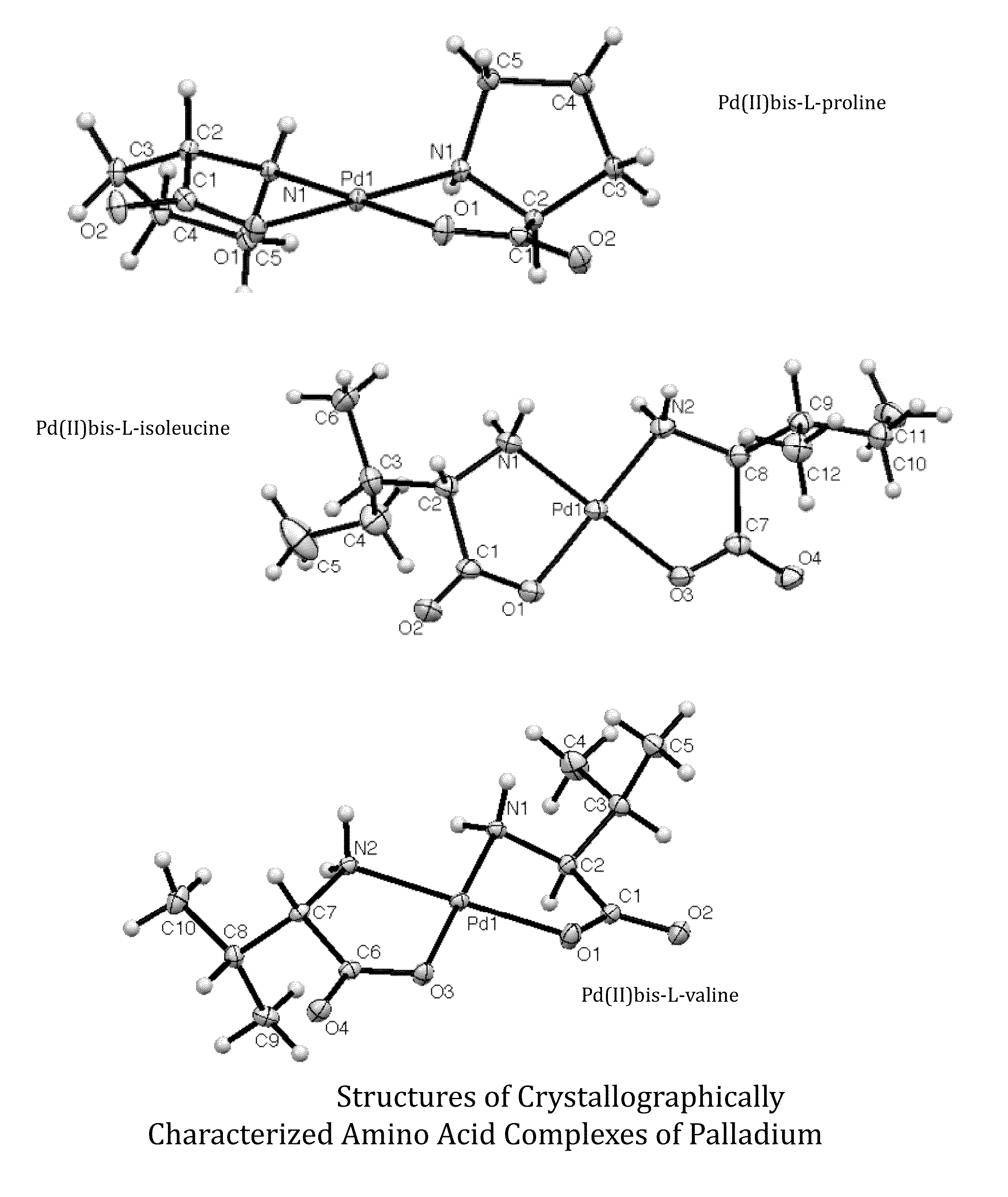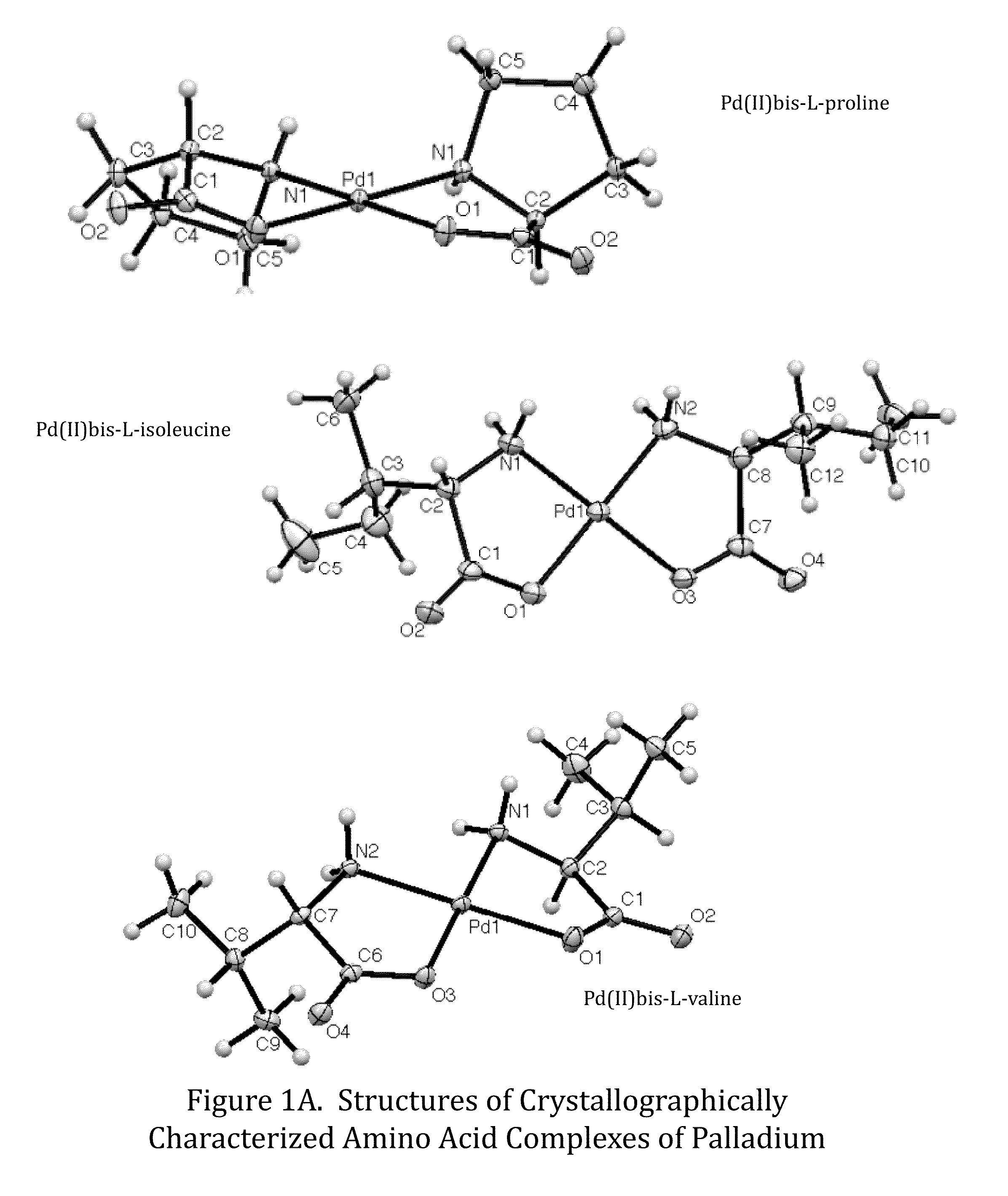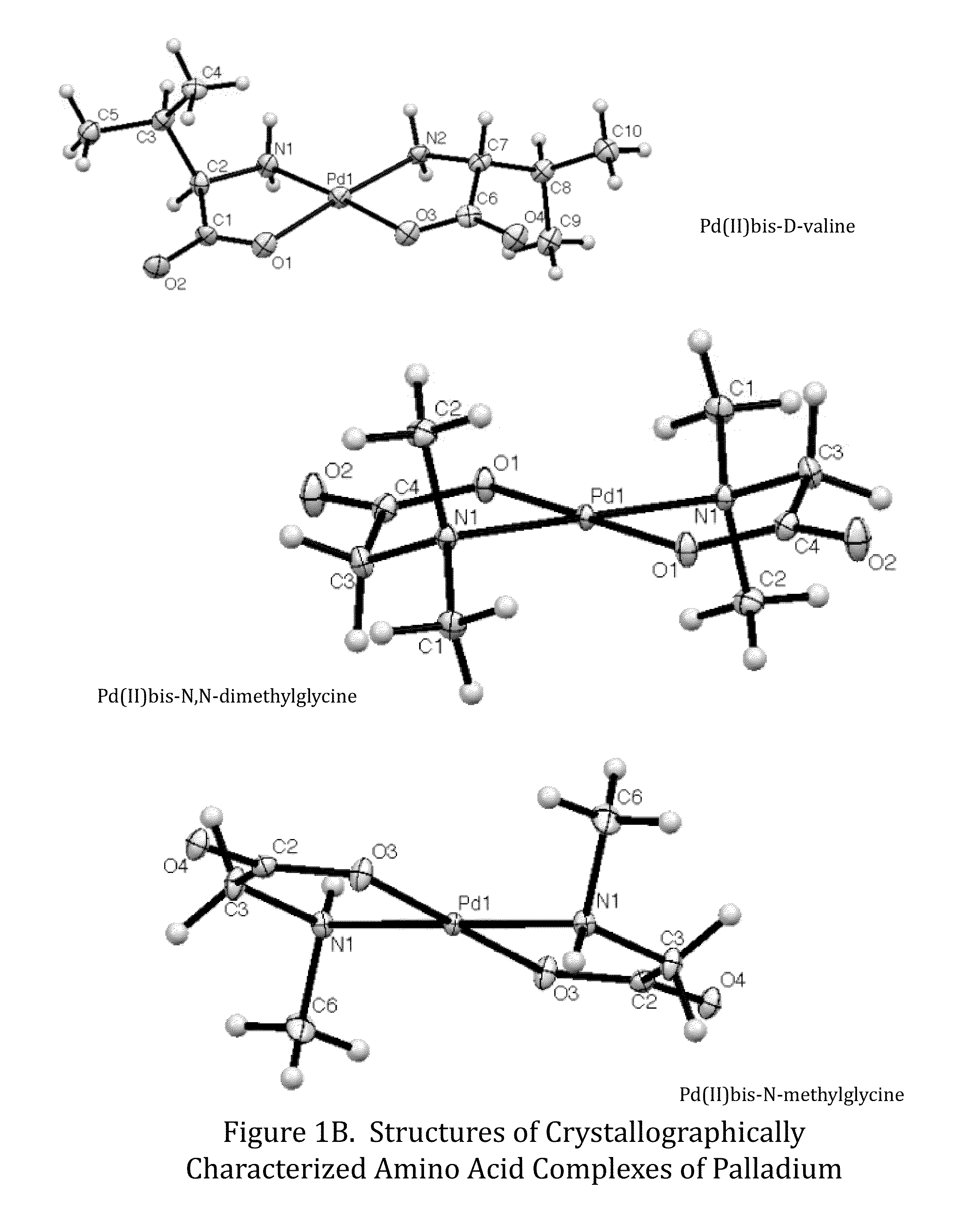Transition metal complexes of amino acids and related ligands and their use as catalysts, Anti-microbials, and Anti-cancer agents
- Summary
- Abstract
- Description
- Claims
- Application Information
AI Technical Summary
Benefits of technology
Problems solved by technology
Method used
Image
Examples
example i
Synthesis of bis-N,N-dimethylglycinato palladium(II) [DH1-27A]
[0074]This exemplary Formula 1 complex, bis-N,N-dimethylglycinato palladium(II), was prepared by charging a four dram vial with 0.0337 grams palladium(II) acetate (1.50×10−4 mol) and 2.5 mL of 1:1 (v / v) acetone:water. The mixture was stirred until completely dissolved. To this was added 0.0312 grams N,N-dimethylglycine (3.03×10−4 mol, 2.02 equivalents) and left to stir overnight. The reaction solution turned from a dark red-orange to a clear yellow with an off-white precipitate on overnight stirring. An odor of acetic acid was noted when the vial was opened. Supernatant was removed to a new flask and was naturally evaporated until ˜0.25 mL remained, with clear yellow needles observed to form. The precipitate was triturated with 2×2 mL H2O and dried under vacuum to yield 43.3 mg product (92.9% yield). Pd(C4H8NO2)2 was identified on the basis of the following data: 1H NMR (400 MHz, D2O, δ): 3.42 (s, 2H), 2.69 (s, 6H). MS m / ...
example ii
Synthesis of bis-prolinato palladium(II) [DH1-29A]
[0076]Additionally, Formula 1 compound, bis-prolinato palladium(II) [DH1-29A] was prepared as follows: A four dram vial was charged with 0.0225 grams palladium(II) acetate (1.50×10−4 mol) and 2.5 mL of 1:1 (v / v) acetone:water. The mixture was stirred until completely dissolved. To this was added 0.0243 grams proline (3.01×10−4 mol, 2.02 equivalents) and left to stir overnight. The reaction solution turned from a dark red-orange to a clear yellow on overnight stirring, with a pale yellow precipitate. An odor of acetic acid was noted when the vial was opened. The supernatant was pipetted into a new vial and allowed to evaporate. Upon crystallization, clear yellow needles were observed. The precipitate was triturated with 2×2 mL H2O and dried under vacuum to yield 31.7 mg product (94.5% yield). Pd(C5H8NO2)2 was identified on the basis of the following data: 1H NMR (400 MHz, Deuterium Oxide) δ 3.91-3.66 (m, 1H), 3.15-2.74 (m, 2H), 2.26-1...
example iii
Bacteriological Activity of Complexes of Formula 1
[0084]Biological activities of complexes of Formula 1 were tested against various strains of bacteria using the following general procedure. It is noted that complexes of Formula 2 and Formula 3 were tested using the same procedure. Generally, 96 well plate dilution tests were performed using a 96-well plate consisting of 8 rows and 12 columns. Each well is charged with the test organism in the appropriate growth medium. The test complex is also dissolved in the test medium and the first well is charged with sufficient complex solution to provide a concentration of 250 ug / mL. Each subsequent well undergoes a 2-fold dilution of the complex (organism concentration remains the same) so that the concentration of test compound decreases from 250 to 125 to 62 to 31 to 15 to 7.5 to 3.7 to 1.85 and so on. Well 12 is used as a control with no test complex. The plates are incubated for 48 hrs in the case of bacteria and 4-5 days in the case of...
PUM
 Login to View More
Login to View More Abstract
Description
Claims
Application Information
 Login to View More
Login to View More - R&D
- Intellectual Property
- Life Sciences
- Materials
- Tech Scout
- Unparalleled Data Quality
- Higher Quality Content
- 60% Fewer Hallucinations
Browse by: Latest US Patents, China's latest patents, Technical Efficacy Thesaurus, Application Domain, Technology Topic, Popular Technical Reports.
© 2025 PatSnap. All rights reserved.Legal|Privacy policy|Modern Slavery Act Transparency Statement|Sitemap|About US| Contact US: help@patsnap.com



